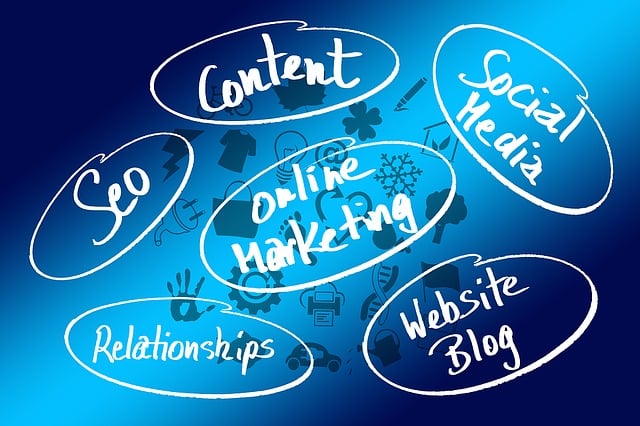AI marketing automation has transformed vehicle repair operations by implementing efficient tools, freeing up staff for complex repairs and enhancing productivity. Utilizing machine learning, these systems predict maintenance needs, personalize campaigns, and optimize pricing, improving customer retention. The guide "Implementing AI Time-Saving Tools" suggests identifying specific needs, exploring diverse AI options with automated scheduling, NLP chatbots, predictive analytics, and diagnostic tools, and integrating them seamlessly via APIs or pre-built integrations. Pilot testing, staff training, and continuous monitoring are essential for optimal performance. Success is measured through KPIs like customer acquisition cost (CAC), email engagement rates, and conversion rates, demonstrating the positive impact of AI on time, resource savings, and sales for vehicle repair shops.
In today’s digital age, vehicle repair businesses are turning to AI marketing automation to stay competitive. This innovative approach leverages AI’s power to streamline operations and enhance customer experiences. From personalized communication to efficient scheduling, AI time-saving tools are revolutionizing how workshops manage their daily tasks. This article explores the benefits of AI marketing automation, provides a step-by-step guide for implementation, and highlights key performance indicators to measure success in this evolving landscape.
- Understanding AI Marketing Automation: How It Benefits Vehicle Repair Businesses
- Implementing AI Time-Saving Tools: A Step-by-Step Guide
- Measuring Success: Key Performance Indicators for AI in Vehicle Repair Marketing
Understanding AI Marketing Automation: How It Benefits Vehicle Repair Businesses

AI marketing automation has transformed the way vehicle repair businesses operate, offering an array of benefits that streamline processes and boost efficiency. These AI time-saving tools for vehicle repair shops are designed to automate repetitive tasks such as customer communication, appointment scheduling, and inventory management, allowing staff to focus on more complex repairs and enhancing overall productivity.
By leveraging machine learning algorithms, AI systems can analyze vast amounts of data to predict maintenance needs, personalize marketing campaigns, and optimize pricing strategies. This predictive analytics not only improves customer retention but also ensures that repair shops stay ahead of the curve in terms of identifying potential issues before they become major problems. Ultimately, AI automation empowers vehicle repair businesses to deliver faster, more accurate services while reducing operational costs.
Implementing AI Time-Saving Tools: A Step-by-Step Guide

Implementing AI Time-Saving Tools: A Step-by-Step Guide for Vehicle Repair Shops
1. Identify Needs and Goals: Begin by evaluating your shop’s current processes and pain points. Determine which tasks are time-consuming or error-prone, such as scheduling appointments, managing customer communications, or tracking inventory. Setting clear goals will guide your AI tool selection.
2. Explore AI Options: Research and consider various AI tools designed for vehicle repair businesses. Look for solutions that offer automated appointment booking, natural language processing (NLP) for customer service chatbots, predictive analytics for parts inventory management, or even AI-driven diagnostic systems. Evaluate each tool based on its functionality, integration capabilities, and potential to streamline your operations.
3. Assess Integration Capabilities: Ensure the AI tools you choose can seamlessly integrate with your existing shop management software and hardware. Proper integration will prevent data silos and ensure a smooth workflow. Check for APIs, plugins, or pre-built integrations that make implementation easier.
4. Pilot Testing: Before full-scale rollout, conduct pilot tests to gauge the effectiveness of each AI tool. Monitor performance metrics like appointment accuracy, customer satisfaction scores, or inventory turnover rates. This step allows you to fine-tune settings and identify any potential issues early on.
5. Staff Training: Equip your team with the knowledge needed to use these new tools effectively. Provide training sessions that cover basic operations, troubleshooting common issues, and leveraging advanced features. A well-trained staff will maximize the benefits of AI automation.
6. Monitor and Optimize: Continuously track the performance of AI tools post-implementation. Regularly review data to identify areas for improvement or additional automation opportunities. Stay updated on new developments in AI technology to ensure your shop remains at the forefront of efficient vehicle repair practices.
Measuring Success: Key Performance Indicators for AI in Vehicle Repair Marketing

Measuring success is paramount when implementing AI marketing automation in vehicle repair businesses, as it provides a clear understanding of the system’s effectiveness and ROI. Key Performance Indicators (KPIs) for AI in this sector should focus on several critical areas. First and foremost, tracking customer acquisition cost (CAC) and comparing it with traditional marketing methods can demonstrate the efficiency of AI tools in saving time and resources while attracting new clients.
Additionally, monitoring email open rates and click-through rates from automated campaigns offers insights into customer engagement. As AI marketing automation personalizes communication based on customer behavior, higher interaction rates indicate successful tailoring of promotional content to individual needs. Further KPIs include the conversion rate of targeted leads into actual customers, which directly showcases the impact of AI time-saving tools for vehicle repair shops on sales and revenue generation.
AI marketing automation offers vehicle repair businesses an efficient and effective way to streamline their operations. By implementing AI time-saving tools, shops can automate tasks like customer communication, appointment scheduling, and data analysis. This not only saves time but also improves customer satisfaction and increases business growth. Using key performance indicators (KPIs) such as lead conversion rates and customer retention, repair businesses can measure the success of their AI marketing strategies and make data-driven decisions for future improvements.
